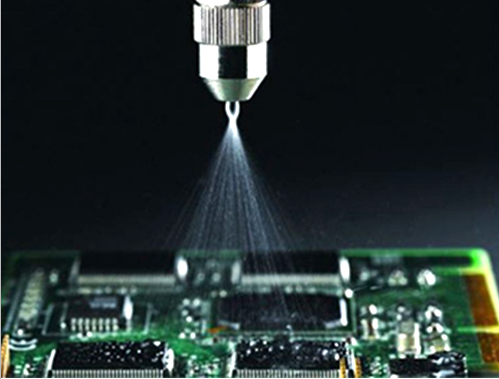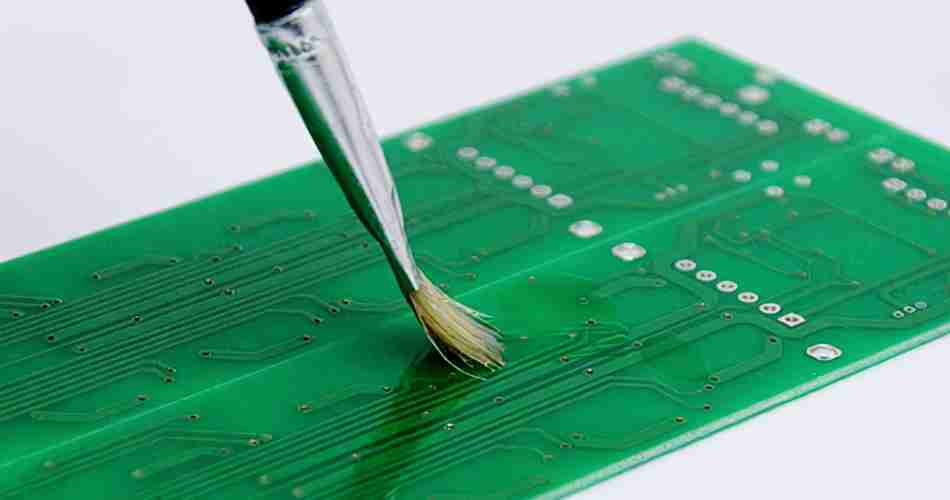PCB conformal coating can ensure the reliability and durability of circuit boards under harsh conditions.
Conformal Coating Paint requirements
1) Paint film thickness requirements
The paint film thickness is controlled at 0.05 mm-0.15 mm, and the dry film thickness is 25um-40um.
2) Secondary coating
To ensure the thickness of products with high protection requirements, a second coating can be performed after the paint film is cured (determine whether to perform a second coating based on demand).
3) Check and PCB repair
Check whether the coated circuit board meets the quality requirements and repair any problems. For example, the pins and other protected areas are scribbled with conformal coating.
You can use tweezers to hold a cotton ball or a clean cotton ball dipped in water to scrub it clean. Be careful not to wash off the correct paint film when scrubbing.
Component replacement: After curing the paint film, if you want to replace the component, you can do as follows:
• Use an electric soldering iron to directly solder the components, and then use a cotton cloth dipped in board cleaning water to clean the materials around the soldering pads.
• Soldering replacement components.
• Use a brush dipped in the three-proof paint to apply in the welding parts and wait for the paint film to dry and solidify.
Operation requirements
1)Workplace requirements
The workplace of conformal coating must be clean and dust-free, with no flying dust. There must be excellent ventilation measures, and Non-staff prohibited entry.
2)Operator protection
When operating, you must wear protective equipment such as a mask or gas mask, rubber gloves, chemical protective glasses, etc. It avoids harm to your body.
3)Clean up after work
After finishing the work, clean the used tools in time and close the container with the three-conformal paint tightly.
4)Anti-static
We should take anti-static measures for circuit boards. Don’t overlap the circuit boards. During the coating process, the PCB should be placed horizontally.
Quality requirements
1)Paint film surface requirements
There should be no paint flow or dripping on the surface of the circuit board. When we apply paint with a brush, avoid dripping onto the locally isolated parts.
The conformal coating should be smooth, bright, and thick evenly to protect the pads, SMT components, or conductor surfaces.
2)Paint film defect requirements
The paint surface and components must not have defects and foreign objects such as bubbles, pinholes, ripples, shrinkage holes, dust, etc., and there must be no powdering or peeling.
3)Non-coatable parts
Locally isolated components or areas should not be coated with conformal coating.
Parts and components that cannot be coated with conformal coating:
Non-coatable conventional devices: For example painted high-power radiators, heat sinks, power resistors, high-power diodes, cement resistors, DIP switches, potentiometers (adjustable resistors), buzzers, battery holders, fuse holders, IC holders, touch switches, relays and other types of sockets, pin headers, wiring terminals and DB9, plug-in or SMT light-emitting diodes (non-indicating function), digital tubes, and grounding screw holes.
4)Special case coating
If Specified conventional non-coatable parts need to be coated, the RD department can determine the requirements or apply the three-conformal coating as indicated on the drawing.
In addition to the points mentioned above, there are also parts and components that cannot be coated with three proof paint as specified in the drawings, and components that cannot be coated with three proof paint as specified in the “Catalogue of Non-Proofing Components (Areas)”.
Summary
In short, conformal coating is a vital process. It should be carried out strictly by the requirements to ensure the safety and reliability of the circuit board.
It can ensure the quality of PCB circuit boards, thereby improving efficiency and reducing subsequent maintenance costs.








